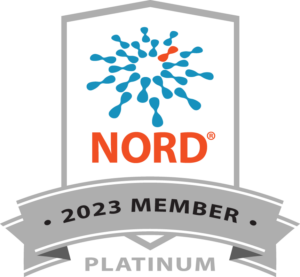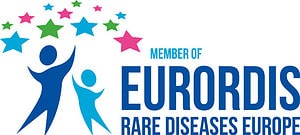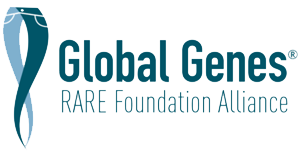General Info for GA2: Glutaric Acidemia Type II
Overview
Glutaric acidemia type II is a type of genetic condition when one of two small molecules, called electron transfer flavoprotein (ETF) or electron transfer flavoprotein dehydrogenase (ETFDH), are not able to do their jobs and unused fats and amino acids can build up to toxic levels in the body. The body usually gets its energy by breaking down, or burning, fats and sugars. People with FAODs cannot properly break down certain types of fats and proteins. This prevents the body from creating enough energy during times of stress, illness, fasting, and exercise, which can lead to medical symptoms.
Alternative Names
Multiple Acyl-CoA Dehydrogenase Deficiency
MADD
GA2
Glutaric Acidemia Type II
Genetics
Affected Genes
ETFA, ETFB, ETFDH
Inheritance Type(s)
- Autosomal recessive
Cause and Genetics
Glutaric acidemia type II can be caused by changes in one of three genes: ETFA, ETFB, or ETFDH. People usually have two copies of each of these genes, one inherited from each parent. MADD/GA2 occurs when there are changes in both copies of one of these genes (autosomal recessive inheritance). Someone who has a change in only one copy of one of these genes is called a carrier, and they usually do not have any medical symptoms. If both parents are carriers, there is a 1 in 4 chance with each pregnancy that their child will have MADD/GA2.
Frequency
Frequency (USA)
1:250,000
Frequency - More Information
Glutaric acidemia type II is very rare and is thought to occur in approximately 1 in every 250,000 newborns. In China, MADD/GA2 is much more common and occurs in approximately 1 in every 22,000 newborns of Han Chinese descent.
Affected Biological Gender
Both Male and Female
Signs and Symptoms of GA2: Glutaric Acidemia Type II
MADD/GA2 can present as a serious condition at birth or as a milder disease in adolescence or young adulthood. Whether your child was diagnosed via newborn screening may also affect when, if, and how these symptoms present. Always check with your doctor if your child is doing something out of “their” normal, as every child may present with symptoms a little differently.
The most common signs and symptoms when MADD/GA2 presents in a newborn include:
- Enlarged, weakened heart (cardiomyopathy)
- Enlarged liver (hepatomegaly)
- A characteristic smell like sweaty feet
- Changes in the brain (encephalopathy)
- Changes in the shape of some parts of the face or body
- Fluid-filled sacs in the kidney (cystic kidney)
- Muscle weakness (hypotonia)
Babies and children with milder forms of MADD/GA2 may only show symptoms after a mild health problem like an ear infection or stomach bug.
Signs and symptoms may include:
- Trouble waking up and feeling tired (lethargy)
- Vomiting
- Irritability
- Muscle weakness, especially after exercising
- Muscle breakdown (rhabdomyolysis)
GA2/MADD can present in adolescence or young adulthood with muscle pain, weakness, and nausea.
Diagnosis
Most severe cases of MADD/GA2 are identified by routine newborn screening. If newborn screening is suggestive of MADD/GA2, additional tests may be performed including:
- Measuring biochemical markers in the blood or urine (including organic acid analysis)
- Measuring ETF or ETFDH protein activity
- Genetic testing to look for changes in the three genes known to cause MADD/GA2
Severe forms of MADD/GA2 can be diagnosed before birth by measuring the level of glutaric acid in the fluid surrounding a baby (amniotic fluid). In some cases, an ultrasound can show cysts in the kidneys.
If there is a family history of MADD/GA2, or if parents are known carriers, prenatal testing can be performed.
Newborn Screening: Recommended Uniform Screening Panel (RUSP)
Yes
Newborn Screening - More Information
Treatment of GA2: Glutaric Acidemia Type II
Treatment and Management
Without immediate treatment, babies with the most severe form of MADD/GA2 often die during the first weeks of life, usually from heart problems. Fortunately, most babies who receive early treatment can survive well into adulthood.
Treatment and management of MADD/GA2 may include:
- Frequent feedings with regular eating schedules
- Low fat, low protein, high carbohydrate diet
- Continuous feeding directly into the stomach in some cases, especially at night
- Possible nutritional supplements including riboflavin (Vitamin B2) and glycine
- Carnitine (to help remove unused fats and amino acids)
- Intravenous (IV) sugar-containing fluids called D10 to treat a metabolic crisis
Children with mild forms of MADD/GA2 are typically given liquids containing sugars on a frequent basis. Parents should call their healthcare provider immediately if babies show symptoms like excessive sleepiness, vomiting, diarrhea, a fever, poor appetite, or an infection. Medical treatment should be sought immediately if there is loss of consciousness or severe confusion (decompensation), as these are signs of dangerously low blood sugar.
Patients should discuss the appropriate preparation for anesthesia with their metabolic team. All patients should have an emergency protocol letter, written and signed by their doctor, that details their prescribed treatment during a crisis and in emergency room settings, to manage severe episodes.
Resources
- Glutaric acidemia type II – About the Disease – The National Institutes of Health
- MADD/GA2 Deficiency | Fatty Acid Oxidation Disorders Diagnosis – The INFORM Network
- Glutaric Aciduria Type II – National Organization for Rare Disorders (NORD)
- What is glutaric acidemia type 2? – ThinkGenetic, Inc
Connecting with others impacted by a rare disease allows for vital information to be shared about day-to-day life, prevents isolation, and gives hope. Please contact MitoAction for peer support opportunities at 888-MITO-411 or email mito411@mitoaction.org.
Other resources we recommend are:
Download the GA2: Glutaric Acidemia Type II Fact Sheet (PDF)
MitoAction does not provide medical advice, diagnosis, treatment, or legal advice. It is essential that all those living with or caring for someone with a Mitochondrial or FAOD disease have an emergency protocol letter. These letters, which are written and signed by a doctor, share details about prescribed treatment during crises and in emergency room settings. Always check with your doctor if you or your child has concerns as everyone may present with symptoms differently. Before beginning any treatment or therapy, please consult with your physician.
Last Updated: 11/15/2022









